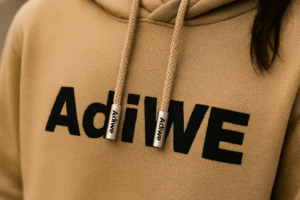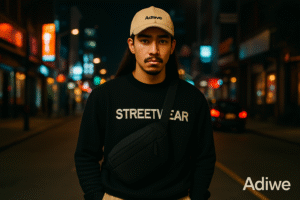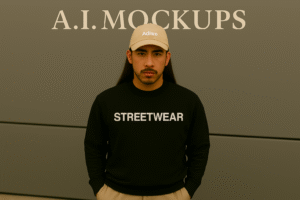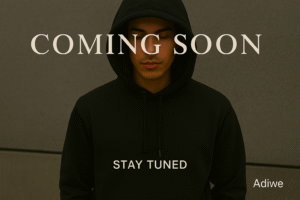Misunderstandings with manufacturers cost you time and money. Poor communication leads to production errors. But clear dialogue ensures your vision becomes reality.
Effective communication with your streetwear manufacturer involves detailed tech packs, regular updates, clear quality expectations, and understanding cultural nuances, ensuring your designs are perfectly executed.
As Sunny from Adiwe, a streetwear factory in China, I've seen firsthand how critical clear communication is. My company, Adiwe, specializes in B2B wholesale, producing top-quality, trendy streetwear like t-shirts and hoodies for clients worldwide, including North America, England, and France. Many brands, especially those like "Fifty Fifty" from England with complex designs, struggle when this breaks down. Their primary purchase, hoodies, often involves intricate craftsmanship. Let's explore how to make every interaction with your manufacturer count for your clothing brand.
Why is a Detailed Tech Pack Your First Essential Communication Tool?
Vague design briefs lead to costly mistakes. Manufacturers can't read your mind. A detailed tech pack bridges that gap effectively for your custom streetwear.
A comprehensive tech pack, with precise measurements, material specs, and construction details, is vital. It minimizes guesswork and ensures your manufacturer accurately understands your vision.
!
Dive deeper Paragraph:
A tech pack is your design's blueprint. It is much more than just a simple sketch. It becomes the primary technical language you and your manufacturer speak. Think about my client, "Fifty Fifty." They are a company owner and buyer, and their clothing styles are relatively complex, requiring a lot of craftsmanship. If their tech pack is incomplete or unclear, how can we at Adiwe deliver the top quality and personalized design they expect for their hoodies? Their main pain point is that many manufacturers are unable to fully reproduce their designs. A detailed tech pack directly addresses this.
Key Elements of a Strong Tech Pack:
| Element | Description | Why It's Important for Adiwe |
|---|---|---|
| Detailed Sketches/Flats | Front, back, side views with callouts for all details (stitching, prints, embroidery, hardware). | Ensures our 5 production lines accurately capture every element of your trendy design. |
| Measurements & Grading | A full garment specification sheet for all sizes you plan to produce. | Critical for consistent fit across your entire product run. |
| Material Specifications | Fabric type, weight (GSM), color (Pantone codes preferred), composition, and any specific finishes. | Allows us to source or utilize the perfect customizable fabrics for your streetwear. |
| Construction Details | Stitch types (e.g., flatlock, coverstitch), seam finishes, hem details, pocket construction. | Essential for achieving the desired craftsmanship and durability. |
| Artwork & Embellishments | Placement, size, colors, and techniques for logos, prints, embroidery, labels, and custom accessories. | We excel at personalized design, custom logos, and accessories; this guides our execution. |
| Packing Instructions | How each item should be folded, bagged, tagged, and boxed. | Ensures your products arrive ready for your customers or distribution. |
A good tech pack dramatically reduces back-and-forth communication. It speeds up the sampling process and significantly cuts down on errors in bulk production. It is the absolute foundation for accurately reproducing those "very trendy" designs that KOLs and clothing brands need to stand out.
How Can Regular Updates and Feedback Loops Prevent Production Nightmares?
Radio silence during production breeds anxiety and uncertainty. Small issues can escalate into big problems if not caught early. Consistent updates keep everyone aligned.
Maintain open lines of communication throughout the process. Schedule regular check-ins and provide prompt, clear feedback on samples to address issues quickly and keep production on track.
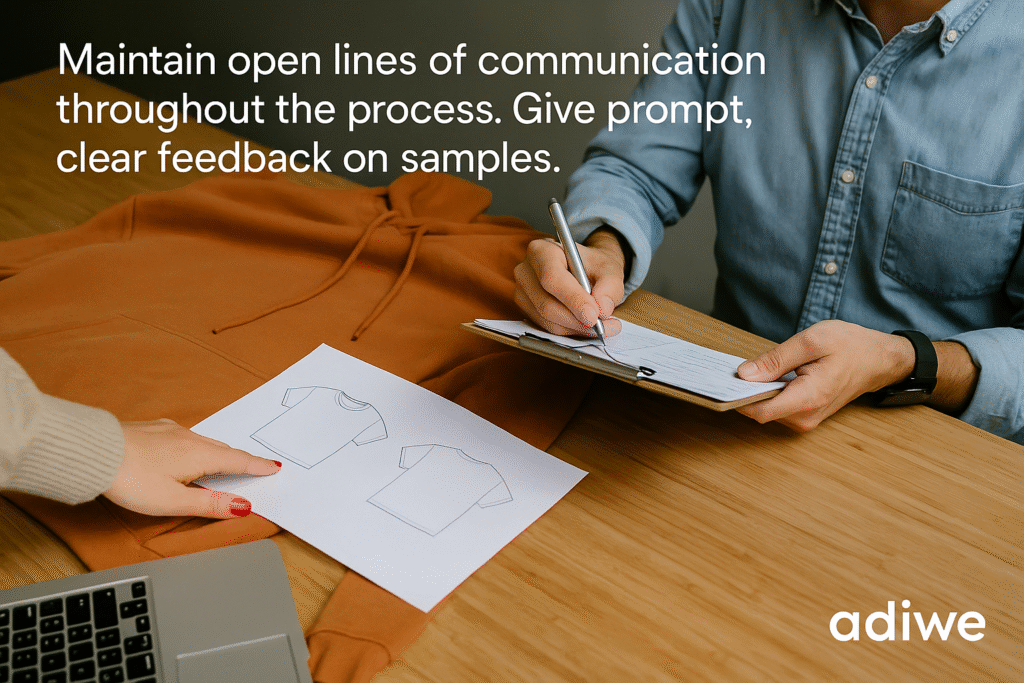
Dive deeper Paragraph:
Once the tech pack is approved and an order is placed, communication certainly doesn't stop. The production process for custom streetwear is dynamic, not static. I've seen clients like "Fifty Fifty," who focus intensely on quality control and get their products from developing countries like China and Vietnam, benefit hugely from proactive updates. They need to know that their complex craftsmanship requirements for their hoodies are being met at each stage. We establish a communication rhythm. For example, Pre-Production Samples (PPS) are a critical checkpoint. You must scrutinize these samples thoroughly. Provide clear, consolidated, and actionable feedback. This is where we at Adiwe ensure the personalized design and customizable fabrics are absolutely perfect. During production, especially for complex items, asking for updates, perhaps photos or short videos of work-in-progress, is reasonable. As a factory with 5 production lines, we are equipped to provide this. If a potential issue arises, for instance, if a specified fabric has a sudden shortage or a particular technique is proving more challenging than anticipated on a new design, your manufacturer should inform you immediately. You can then discuss solutions together. Promptness from your side is also key. If you delay feedback on a sample for a week, you delay the entire production schedule by at least that much. Clear feedback means explaining why something isn't right and suggesting specific changes, not just saying "I don't like it." This collaborative approach helps us deliver the top quality your brand needs.
What Role Does Understanding Cultural and Language Nuances Play in Smooth Collaboration?
Language barriers can easily create significant misunderstandings. Different work cultures also have different communication styles. Empathy and a commitment to clarity bridge these divides.
Be mindful of potential language barriers and cultural differences. Use clear, simple language, always confirm understanding, and exercise patience to foster a positive, productive working relationship.
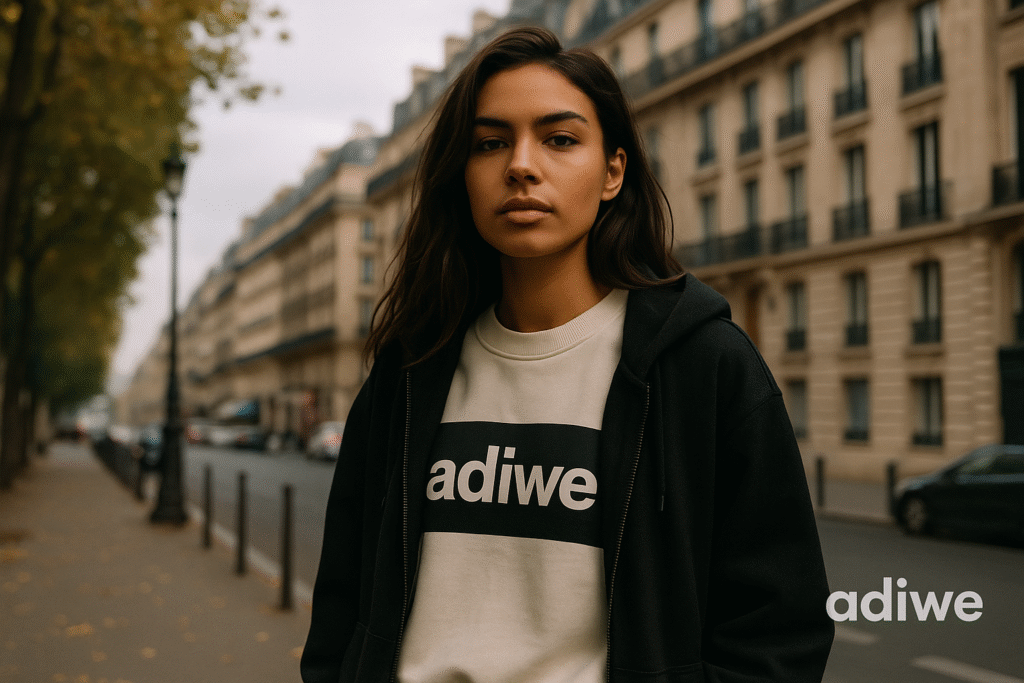
Dive deeper Paragraph:
As someone running Adiwe, a factory in China, and exporting our streetwear (t-shirts, hoodies, etc.) to main export countries like North America, England, and France, I navigate this daily. While many manufacturers, including us, have English-speaking staff dedicated to client communication, subtle nuances can easily get lost in translation, or assumptions can be made. Even when working with a client like "Fifty Fifty" from England, where English is the native language for both parties, differences in business etiquette or colloquialisms can lead to confusion.
Tips for Bridging Communication Gaps:
- Use Simple, Direct Language: Avoid slang, complex jargon, or overly idiomatic expressions. Short, clear sentences are best.
- Leverage Visuals: Supplement written communication with images, diagrams, detailed call-outs on sketches, or even short videos to explain complex points, especially regarding craftsmanship or personalized design features.
- Confirm Understanding (Both Ways): Don't just assume you've been understood, or that you've understood them. Ask clarifying questions like, "So, to confirm, you need this seam to be a double-needle stitch, correct?" Or, request they summarize key decisions back to you.
- Be Patient and Respectful: Building rapport and understanding takes time. Be mindful of time zone differences affecting response times.
- Acknowledge Business Hours & Holidays: Be aware of national holidays in your manufacturer's country (e.g., Chinese New Year in China). Plan around these to avoid unexpected delays.
A little extra effort in adapting your communication style and showing cultural sensitivity can prevent major headaches. It demonstrates respect, which is vital for any good B2B wholesale relationship, especially when dealing with customizable fabrics and intricate logos.
How Does Discussing Quality Control and Expectations Upfront Save Time and Money?
Receiving an entire batch of poor-quality goods is a nightmare scenario for any brand. Vague assumptions about quality inevitably lead to disappointment and disputes. Define your standards clearly from day one.
Clearly define your quality standards, inspection processes, and acceptable defect rates before production begins. Approve all samples meticulously to set the definitive benchmark for quality.
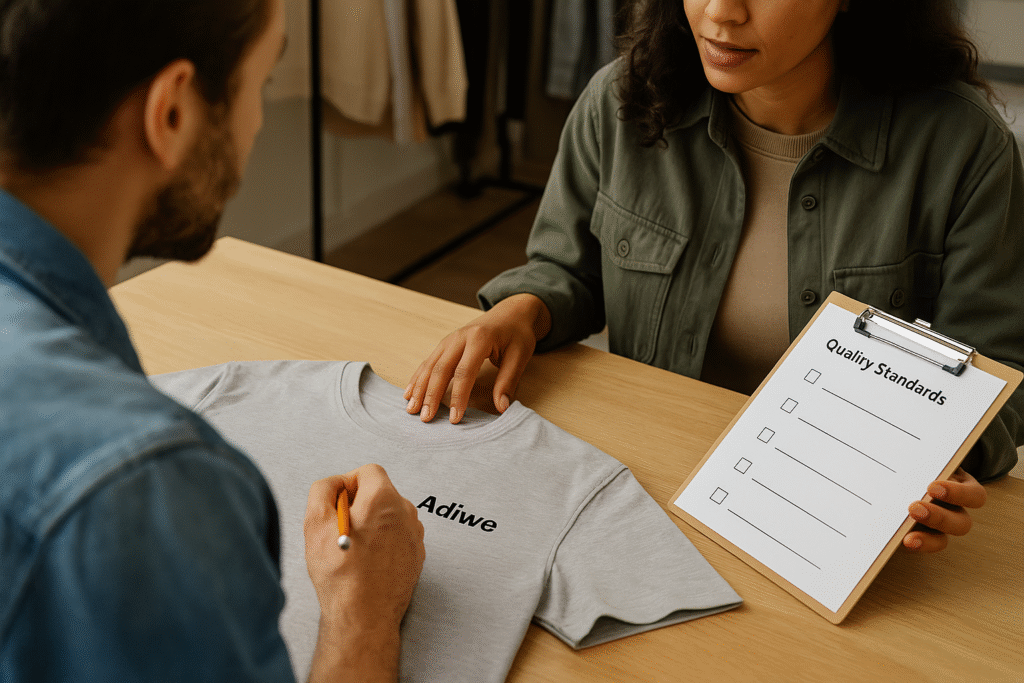
Dive deeper Paragraph:
For my client "Fifty Fifty," quality control is one of their top sourcing key points. They make their own brand of products and sell them to young people who like their brand, so maintaining a reputation for top quality is paramount. This expectation for high standards needs to be explicitly communicated and agreed upon before any mass production starts. While many manufacturers like Adiwe pride ourselves on producing "top quality" streetwear, the term "top quality" can be subjective if not backed by concrete, measurable standards.
Key Quality Discussion Points:
| Aspect | Detail to Discuss | Why It's Crucial |
|---|---|---|
| Reference Samples | The approved Pre-Production Sample (PPS) is the gold standard. All bulk production must match this sample. | Provides a physical benchmark for every detail, from fabric to craftsmanship. |
| AQL (Acceptable Quality Limit) | Agree on an AQL standard (e.g., AQL 2.5) for inspections. This defines how many defects are acceptable. | Sets clear expectations for pass/fail rates during inspections. |
| Inspection Points | When and how will inspections occur? (e.g., inline checks, final pre-shipment inspection). By whom? (Your team, manufacturer, third-party). | Determines how and when quality issues will be identified and rectified. |
| Defect Classification | Define what constitutes a minor, major, or critical defect for your specific products (t-shirts, hoodies, etc.). | Helps in objective assessment during inspections. |
| Tolerance Levels | Specify acceptable variances for measurements, color matching (Pantone deviation), print placement, etc. | Acknowledges minor production variations while maintaining overall quality. |
Documenting these quality expectations in detail, alongside your tech pack, helps avoid misunderstandings and costly disputes later. When a client's designs are complex and require a lot of specific craftsmanship, like the hoodies "Fifty Fifty" orders, these upfront discussions are even more vital for ensuring their personalized designs and customizable fabrics are executed flawlessly.
Why is Building a Long-Term Relationship with Your Manufacturer a Strategic Advantage?
Constantly switching suppliers is inefficient and risky. Building trust and mutual understanding takes time and consistent effort. A strong, stable partnership offers numerous benefits.
Nurturing a long-term relationship with your streetwear manufacturer fosters deep trust, better understanding of your brand's evolving needs, often preferential treatment, and potentially more favorable terms over time.
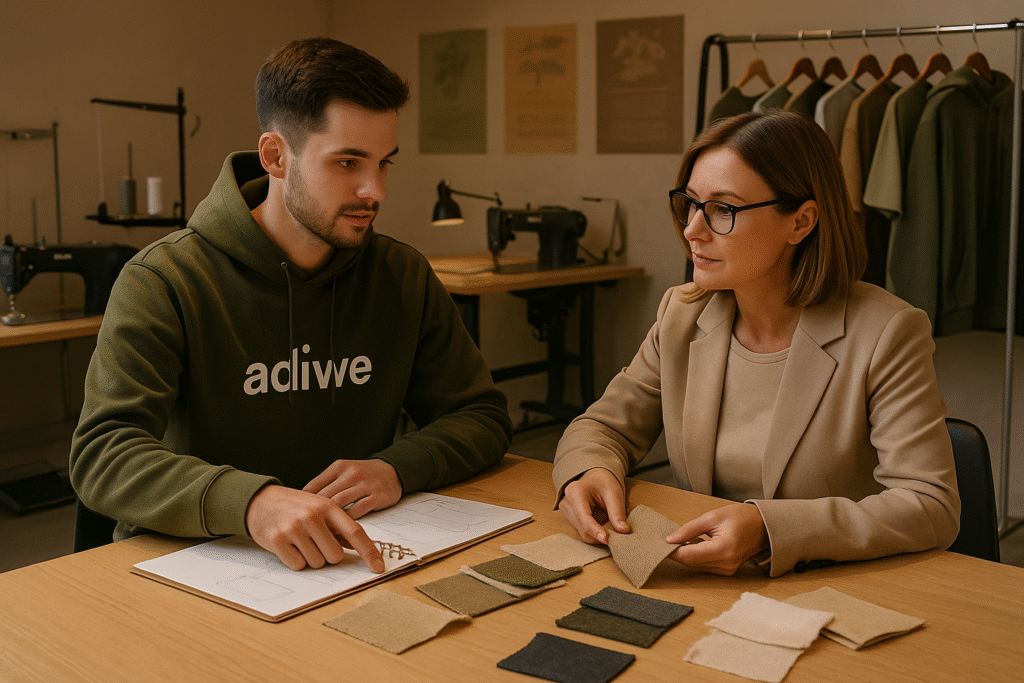
Dive deeper Paragraph:
Finding a reliable manufacturer who truly understands your brand's aesthetic, quality standards, and target market – like how we at Adiwe aim to understand our B2B clients, whether they are KOLs, established trend brands, or emerging clothing brands – is incredibly valuable. My client "Fifty Fifty" mentioned that a key pain point was that many previous manufacturers were unable to fully reproduce their intricate designs. Once they find a manufacturer who can consistently deliver (like Adiwe, with our focus on top quality craftsmanship and personalized design for even complex styles), cultivating that relationship becomes a strategic asset.
Benefits of a Strong Manufacturer Partnership:
- Deeper Mutual Understanding: Your manufacturer learns your specific preferences, your non-negotiable quality points, and your brand's unique style. This makes communication smoother and reduces errors over time.
- Priority Treatment & Flexibility: Long-term partners often receive priority scheduling, more flexibility with minimum order quantities (MOQs), or even first access to new materials, techniques, or customizable fabric options we develop.
- Proactive Problem Solving: A trusted manufacturing partner is more invested in your success and is more likely to go the extra mile to proactively identify and resolve potential issues before they escalate.
- Potential for Better Terms: Over time, as trust and volume grow, there may be opportunities to negotiate more favorable pricing, payment terms, or logistics solutions.
- Collaborative Innovation: They might suggest new trendy approaches or cost-saving production methods relevant to your streetwear line.
This isn't just a transactional buyer-seller dynamic; it's about building a collaborative partnership. Consistent, clear communication, mutual respect, and prompt payments are foundations for this trust. As a factory, we at Adiwe highly value clients who are clear in their needs, respectful in their interactions, and reliable in their commitments. It makes us want to consistently deliver our best work for their trendy t-shirts and hoodies.
Conclusion
Clear, consistent, and detailed communication is the absolute bedrock of successful streetwear manufacturing. It ensures your unique vision is precisely realized, saving you significant time, money, and stress.

